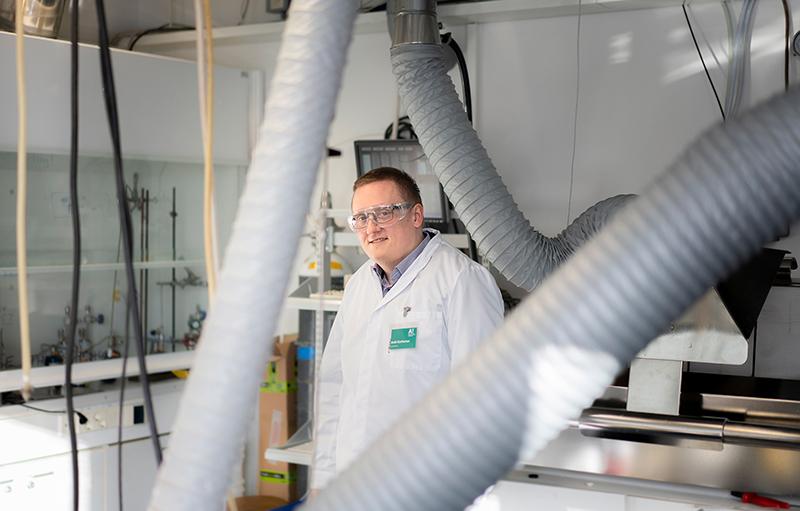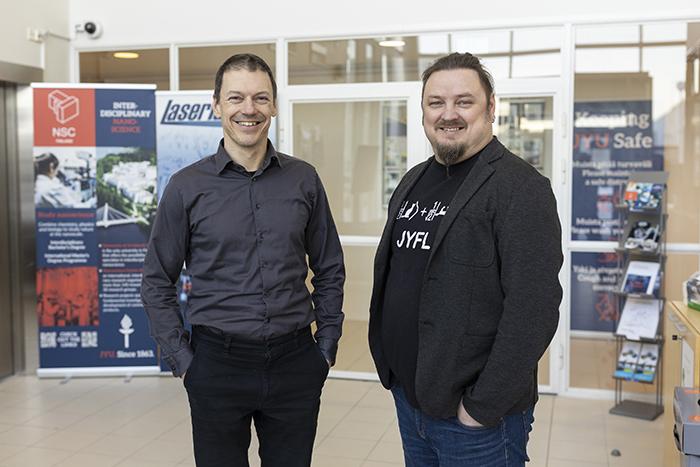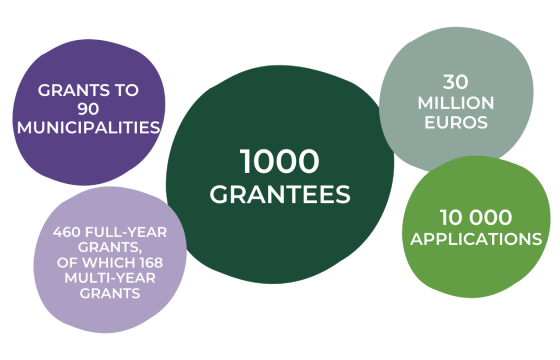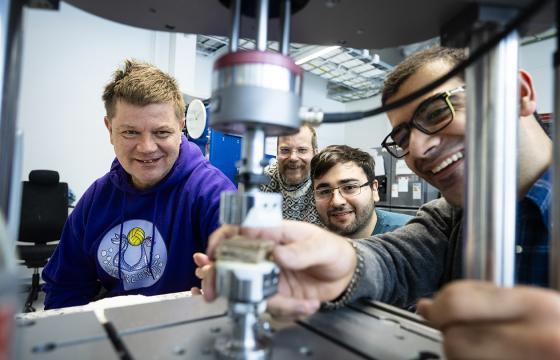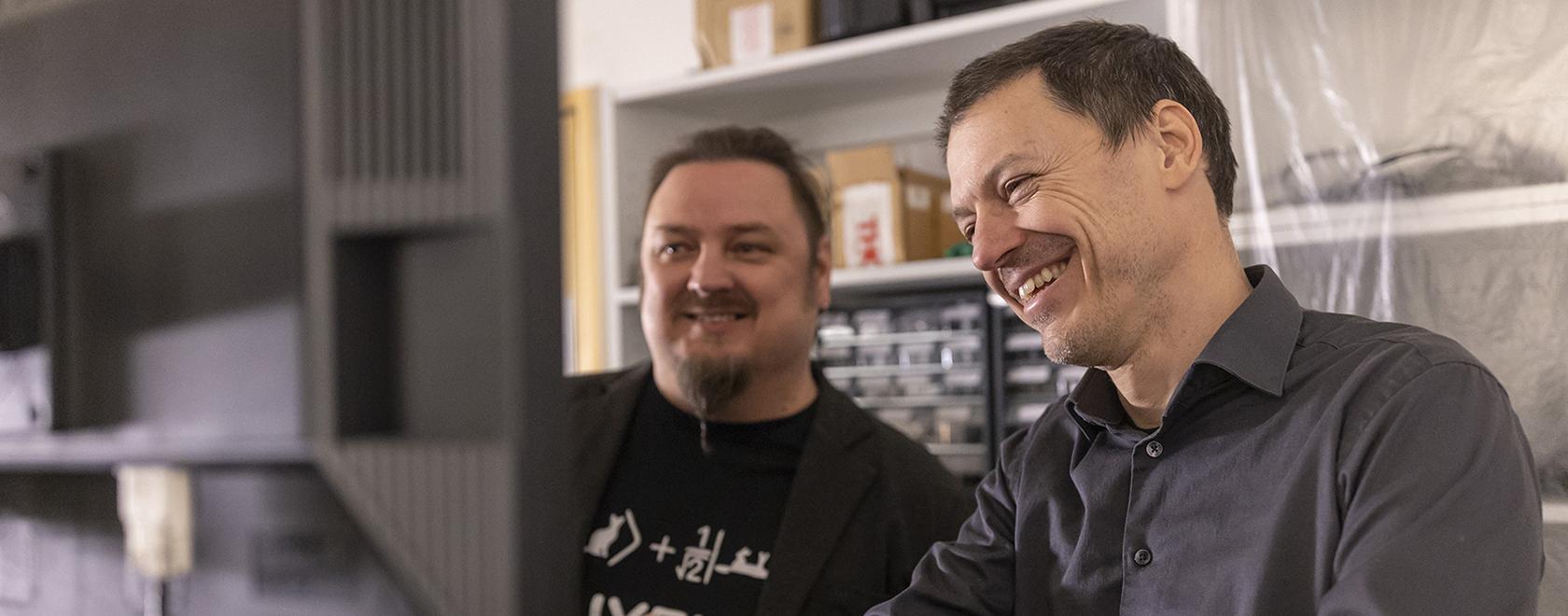
Text: Elina Venesmäki
Could lost heat be recovered more efficiently? This is the subject of research for Ph.D. Antti Karttunen and Ph.D. Maarit Karppinen and their teams at Aalto University.
The Finnish Cultural Foundation decided to grant EUR 1,25 million euros in funding on the theme of “new materials and technologies for the green transition”. Karttunen and Karppinen’s teams were among the grantees.
“We are researching how to turn heat loss into electrical energy,” Karttunen says.
Say someone burns wood in a fireplace to save on heating energy, for example; could they collect the extra heat and turn it into electricity to charge their phone?
Our researchers are looking into this. Server rooms, for instance, generate huge amounts of heat, but usually it is fanned out. In Finland it is used for heating in winter, but at other times and in other parts of the world it is mostly just lost.
That doesn’t have to be the case. The scientists are focusing on a technique called atomic layer deposition (ALD), which creates thin films. These are used to turn heat into electricity.
Karttunen demonstrates a device smaller than a mobile phone, that is already capable of doing so.
The technology is already 50 years old, but it has two problems: first, it is not very efficient; second, it involves rare metals, which means it cannot be universally applied.
These are the issues Karppinen and Karttunen are looking to solve in order to make the technology widely reproducible.
“We want to use a material that appears commonly in the earth’s crust, such as iron,” Karttunen says. The metals currently used in the devices are also toxic, so they are searching for a safer material.
Heat loss is everywhere
An electric car’s batteries produce heat loss, as do industry, computer rooms and even the human body. Could a film created through ALD be added to a sports shirt and the heat generated during a gym session be used to charge a mobile phone?
“Collecting heat from a gym shirt is a small step, of course. But electric car batteries and data centres generate huge amounts of heat that is wasted in most parts of the world.”
These issues mentioned earlier must be solved before anything major is created. So where could one find a commonly available, safe material, and how does one make the device as efficient as possible?
The research team has access to an ALD machine around one metre in width, height and depth. A test piece can be placed inside, and it will be coated in a film that collects heat and turns it into electricity.
“Green steel production is currently a hot topic. Soon steel manufacturers will be able to use hydrogen, which will cut carbon dioxide emissions. This is fine, but it will still generate huge amounts of heat loss,” Karttunen says.
Novel solar cells
Professors Jussi Toppari and Gerrit Groenhof and their research teams at the University of Jyväskylä are also working to further the green transition. They received the same funding to create more efficient and ecological solar cells.
Currently there are two types of photovoltaic cells: organic and inorganic (semiconductor-based).
The efficiency of organic solar cells is only just over 10 per cent. Semiconductor-based solar cells are mostly seen on ordinary roofs because they are much more efficient and durable than organic ones, but even their efficiency is not great. Typical silicon solar cells capture and process around 30 per cent of the energy radiated by the sun.
Toppari and Groenhof want to take this further: they want to collect energy from a large area onto one or a handful of molecules, from where it goes into storage.
“We are already able to make molecules transfer the energy they receive from light really efficiently from a large area onto one molecule. The bottleneck is how to move it on from there,” Toppari explains.
Target: more power
The subjects of study here are on a very small scale, measured in nanometres (one billionth of a metre).
There are many molecules that can collect photons, i.e. absorb light. Having absorbed a photon, the molecule becomes energized. It can transfer this energy on to another molecule, for example, or emit an electron, which creates an electrical current. This is the operating principle of some organic solar cells.
“We are taking this further in that the photons are not absorbed directly into the molecules but become coupled with metallic nanostructures. This turns the light into a surface plasmon, which becomes coupled much more strongly and with several molecules at a time.”
The surface plasmon and the molecules form a single space among which the energy spreads. This permits high-speed energy transfer between the molecules. The scientists intend to utilise this property in a new type of cell.
They have already demonstrated that light can couple with several molecules. This three-year grant period will focus on how the energy can be passed forward once it is collected.
“This period gives us time to build a prototype and prove that it works.”
